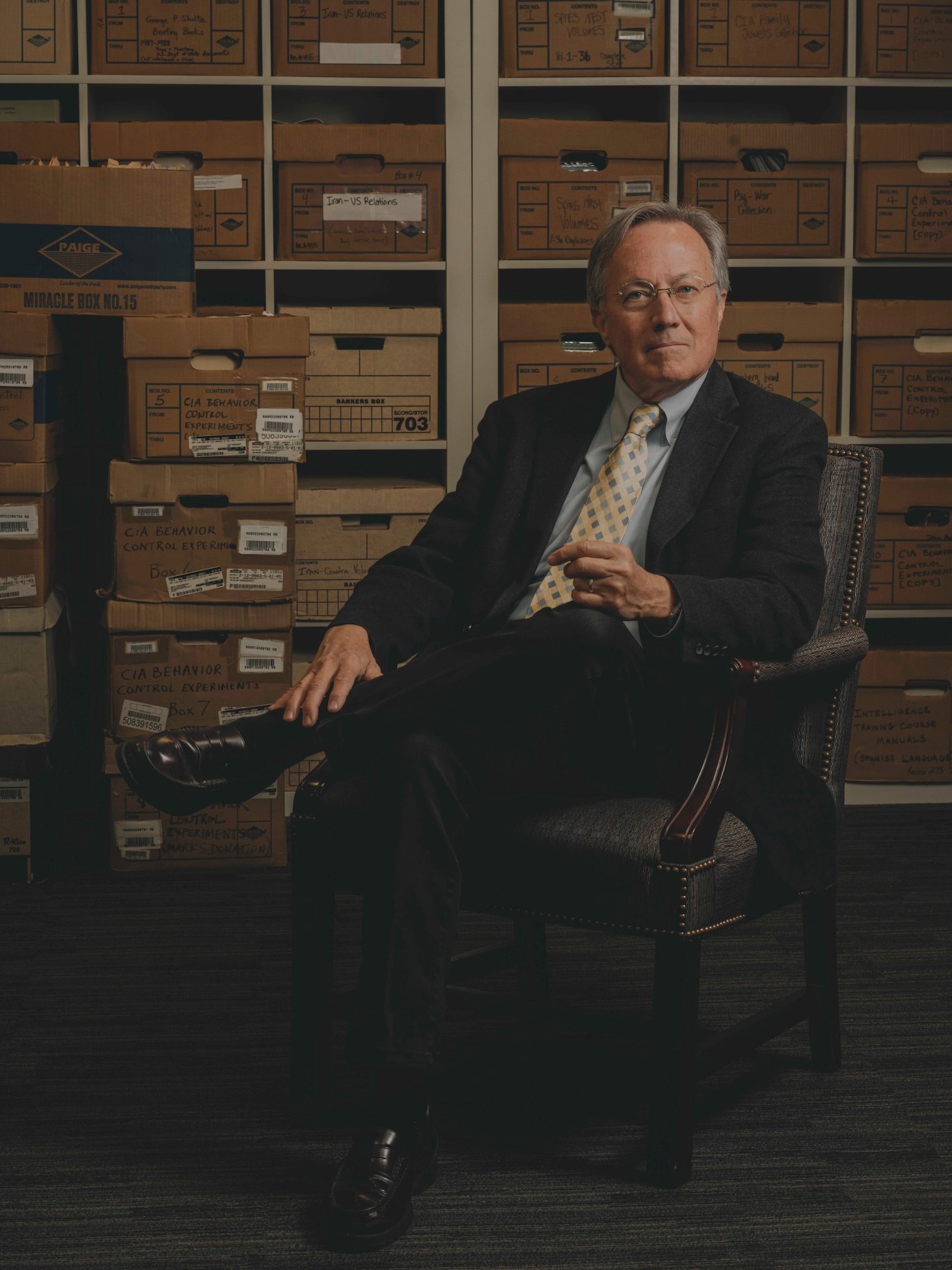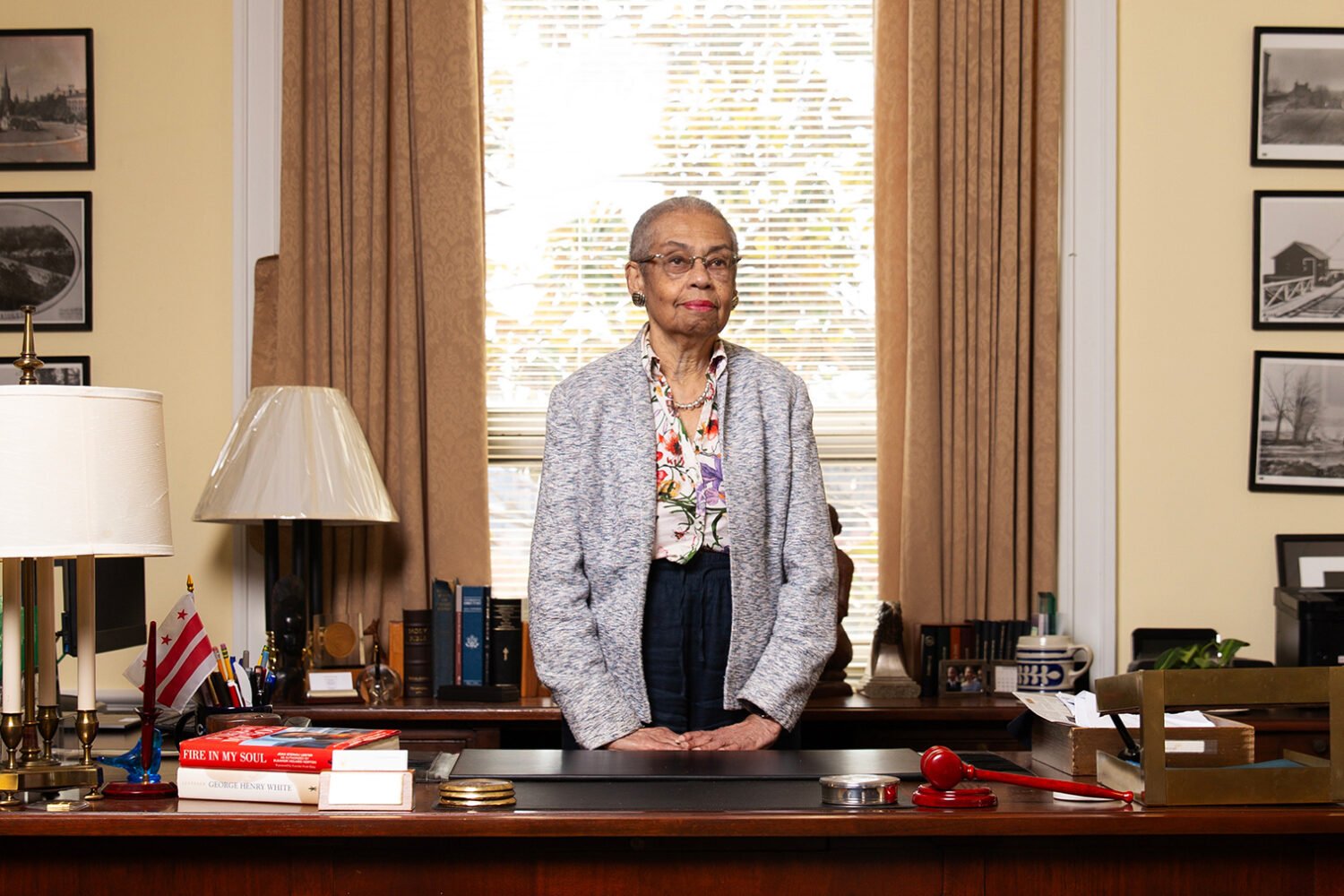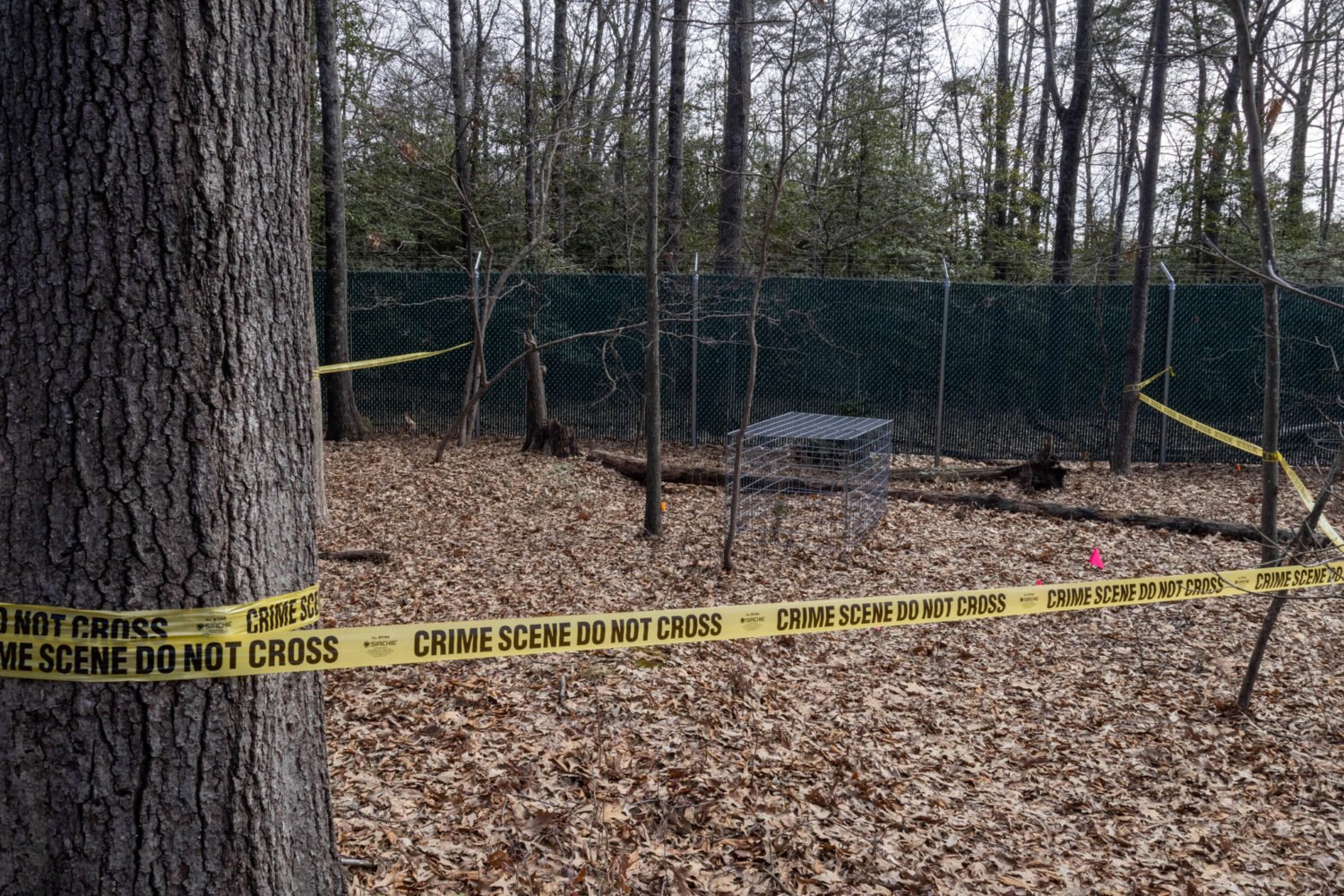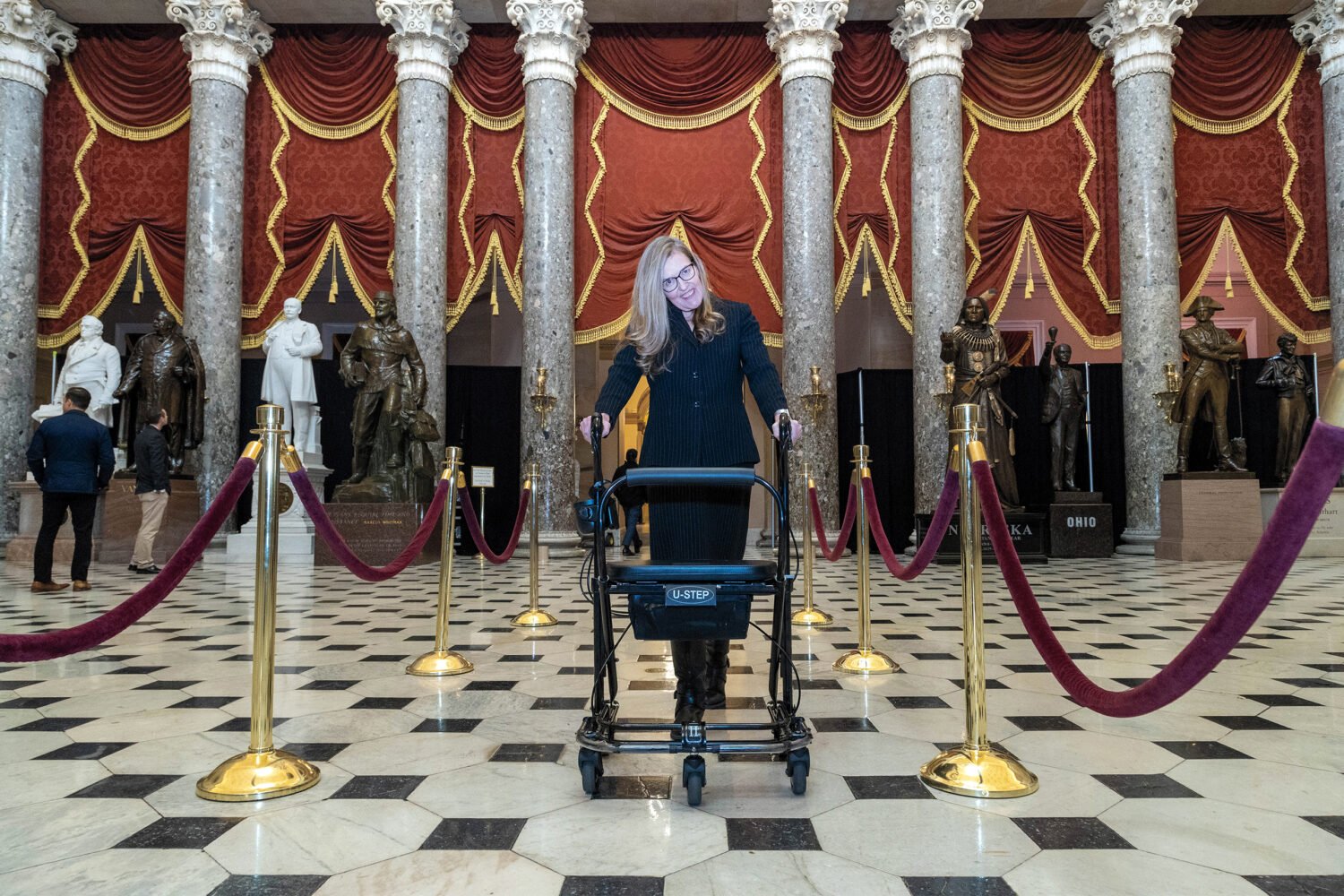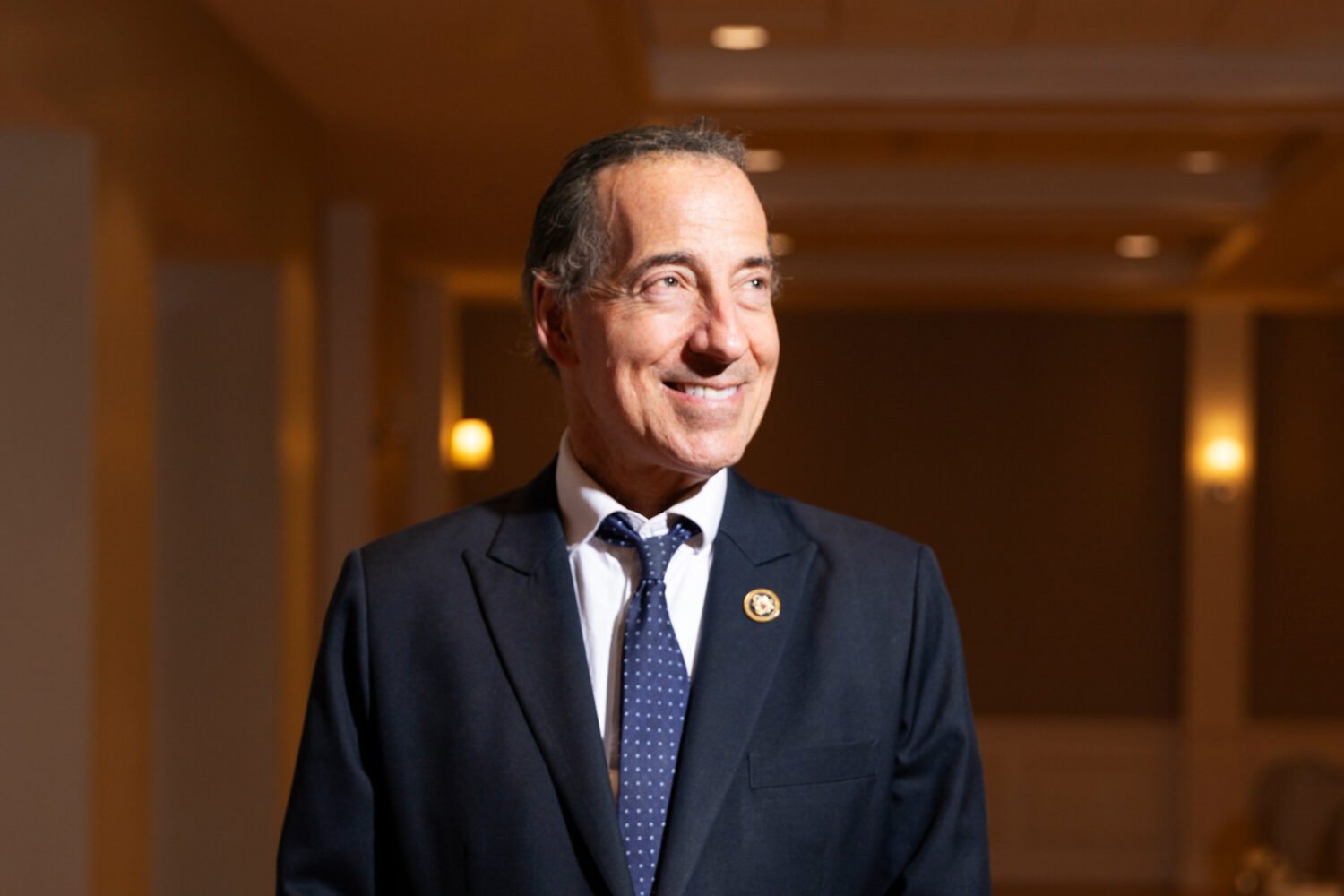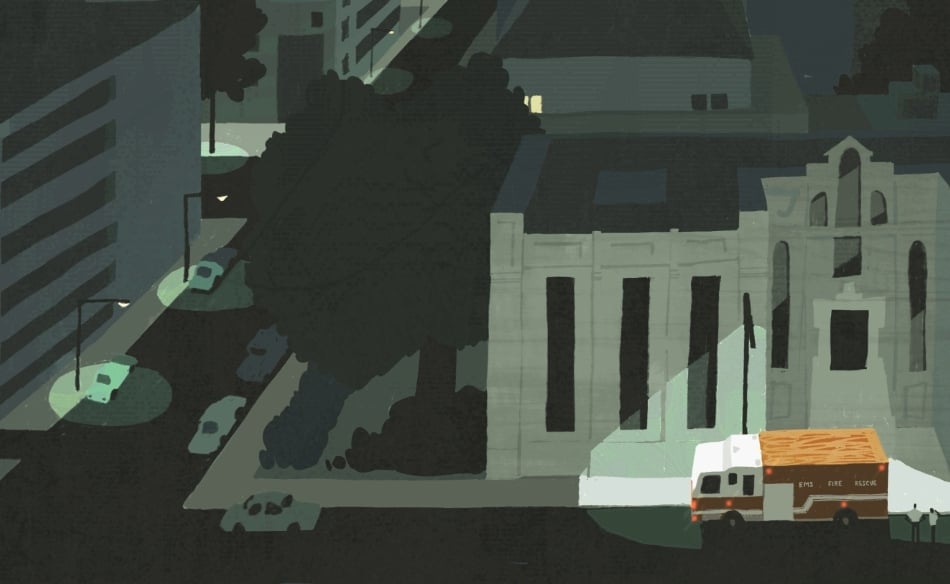
Here’s one: a 1987 email from a staffer to then deputy national-security adviser Colin Powell, filling him in on a high-level meeting he’d skipped on the future of Iran and Iraq. And actually, it’s two versions of the same email—one released by the White House under legal pressure one week in 1994, the other released about a week later. Big chunks are blacked out of both, but the funny thing is they’re nearly opposite sets of chunks. What’s more, both redactions came at the hand of the very same National Security Council reviewer, whose job it was to decide what counted as classified.
Blanton knew the reviewer, he says, so he rang the guy up and asked: What gives? Well, as Blanton tells it, when the reviewer did a first pass on the email, political unrest in Egypt was in the news, so references to the White House’s handling of that hot spot seemed especially sensitive. On the second pass, the same logic applied to Libya.
“Secrecy,” Blanton says, “is so subjective.”
Blanton has made a career of finding out things the government doesn’t want the rest of us to know. The Powell emails are just drops in the bucket of once-classified documents and other secrets that have been collected at the headquarters of the National Security Archive, a nonprofit that has become, rather improbably, Washington’s ground zero for truly inside information. Located on the seventh floor of George Washington University’s Gelman Library, its offices are stacked with cardboard boxes sporting labels like “CIA Behavioral Experiments”. A magnet reading “Don’t Shred on Me!” is stuck on Blanton’s filing cabinet, near a desiccated snake plant.
The archive’s 68-year-old director, Blanton has been doing this for nearly four decades. He arrived in Washington in the mid-1980s, at the tail end of the Cold War, and spent his first years, he says with a laugh, “rapidly failing in a variety of jobs.” He then discovered his passion. Since its 1985 inception, the archive has obtained billions of government documents and emails, covering everything from the Cuban Missile Crisis to former Secretary of State Henry Kissinger’s transcribed telephone conversations. Many are mundane. Others—like a Nixon White House memo suggesting the President ask Elvis Presley to “encourage fellow artists to develop a new rock musical theme, ‘Get High on Life’ ”—are delightfully daft.
Then there are the documents the archive exists to uncover: protected information that, when dragged into the light, helps us see the unredacted truth about our own history, the better to avoid repeating mistakes. For example, the CIA’s “Family Jewels”—an internal compendium of assassination plots, domestic spying, and secret tests of mind-altering drugs such as LSD that prompted congressional investigations in the 1970s and that the agency finally released to the archive for public consumption in 2007. The archive also has helped India and Mexico write freedom-of-information laws, provided expert testimony in international human-rights trials, and sued multiple presidential administrations—most notably Donald Trump’s—for alleged failures to keep and share records with the public.
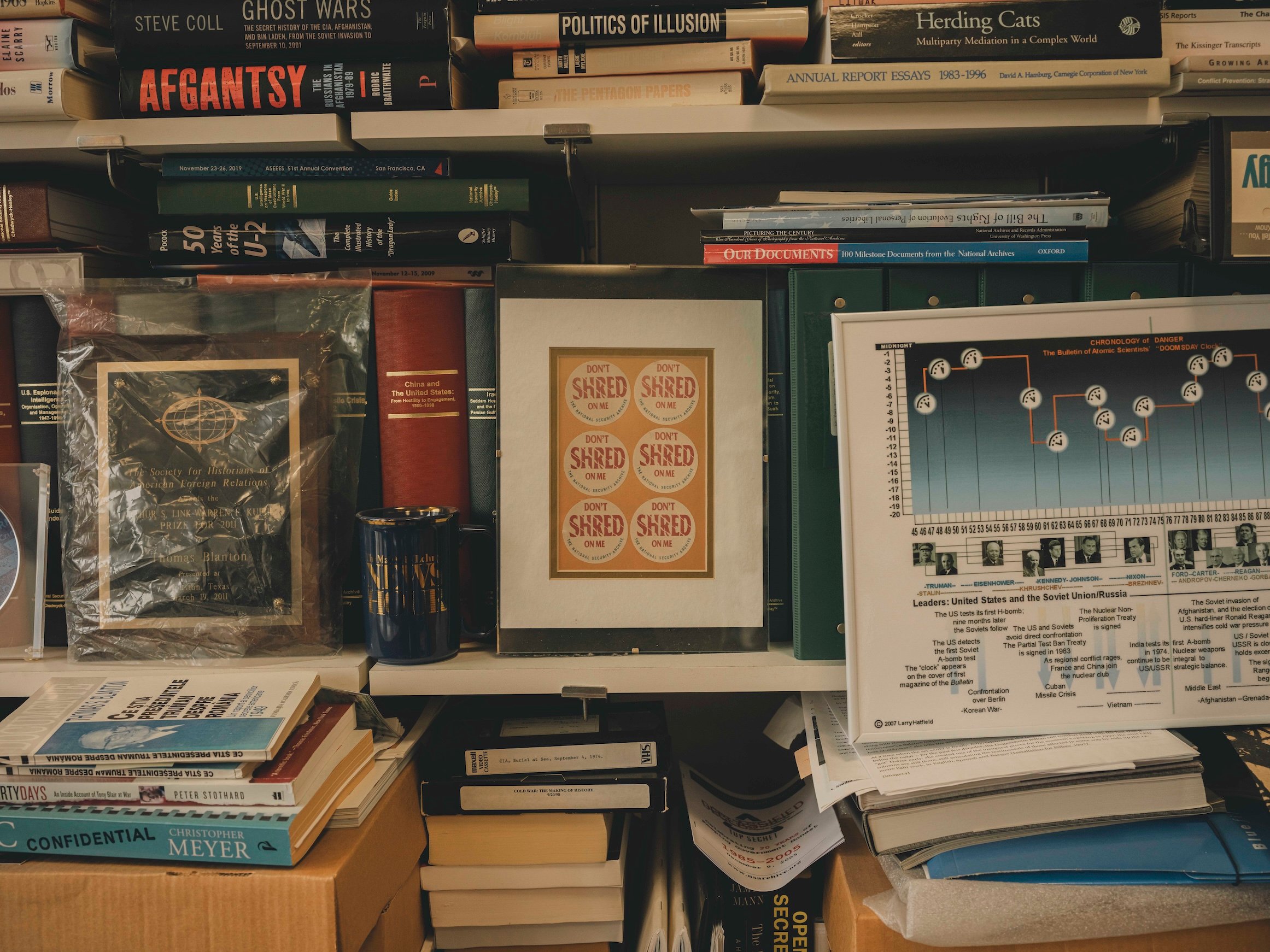
Washington is a city that moves on quickly—from political battles, questionable intelligence, and the aftermath of diplomatic decision-making. Blanton, who gleefully describes himself as a “document fetishist,” and his merry band of roughly two dozen fellow bloodhounds working at the archive are committed to not letting this town forget.
“What’s the great phrase?” Blanton asks, dropping his voice to a whisper and quoting Faulkner. “ ‘The past is never dead. It’s not even past.’ ”
Born in Greensboro, Georgia, in 1955, Blanton was raised all over the South. “My daddy was a preacher,” he says. As a teen in Bogalusa, Louisiana, he absorbed the lessons of David Halberstam’s The Best and the Brightest, a devastating account of how Washington whiz kids led the United States through a disastrous Vietnam War. The book, Blanton says, taught him two things: “One, government always lies. And two, those people at the top of government? They all went to Harvard.”
So off to Harvard Blanton went. He dropped out after his junior year, following some fellow Harvard Crimson staffers to Minnesota, where they were attempting to get an alt-weekly off the ground. While investigating the construction of controversial high-voltage power lines across farm country, Blanton wrote to federal regulators, asking for copies of studies on the health effects of those lines. He was a 22-year-old cub reporter for a fledgling local paper, shaky enough that it would soon fail. But he had a powerful new tool: the Freedom of Information Act, or FOIA.
Passed in the mid-1960s by a Congress worried that, as one committee report put it, “the weed of improper secrecy had been permitted to blossom and was choking out the basic right to know,” the act was signed kicking-and-screaming by President Lyndon Johnson. Somewhat unusually for a law, it told the government how it had to behave, establishing the basic principle that, should the public ask for federal records, the feds had an obligation, within reason, to hand them over quickly.
Blanton’s power-line request came back empty—it turned out the government hadn’t conducted any safety studies. “No documents,” he says, “was a good story.” With student-loan repayments looming, Blanton returned to Harvard. After graduating, he moved to Washington. Juggling freelance journalism gigs with stints working on congressional races and for Ralph Nader, he became part of a small circle of reporters figuring out how to leverage FOIA to advance their reporting—and how to get around the law’s carve-out for information that would harm the country’s national security.
Within the group were two hard-charging reporters: the Washington Post’s Scott Armstrong, a former investigator on the Senate committee probing the Nixon administration’s involvement in Watergate, and Ray Bonner of the New York Times. Both were chasing one of the big stories of the early 1980s: what the US knew about the atrocities committed by El Salvador’s right-wing “death squads,” said to have killed students, left-leaning activists, and political opponents.
Armstrong and Bonner thought they were getting half-answers from the federal government. “Scott said, ‘Let’s pool our documents,’ ” recounts Bonner on the phone from Sydney, Australia, where he now runs a bookstore. “I said, ‘Fine, you’ve got them.’ ” In the summer of 1985, they set up shop in a borrowed corner of Brookings Institution office space. The National Security Archive—a name chosen to give a helpful whiff of officialdom—was born.
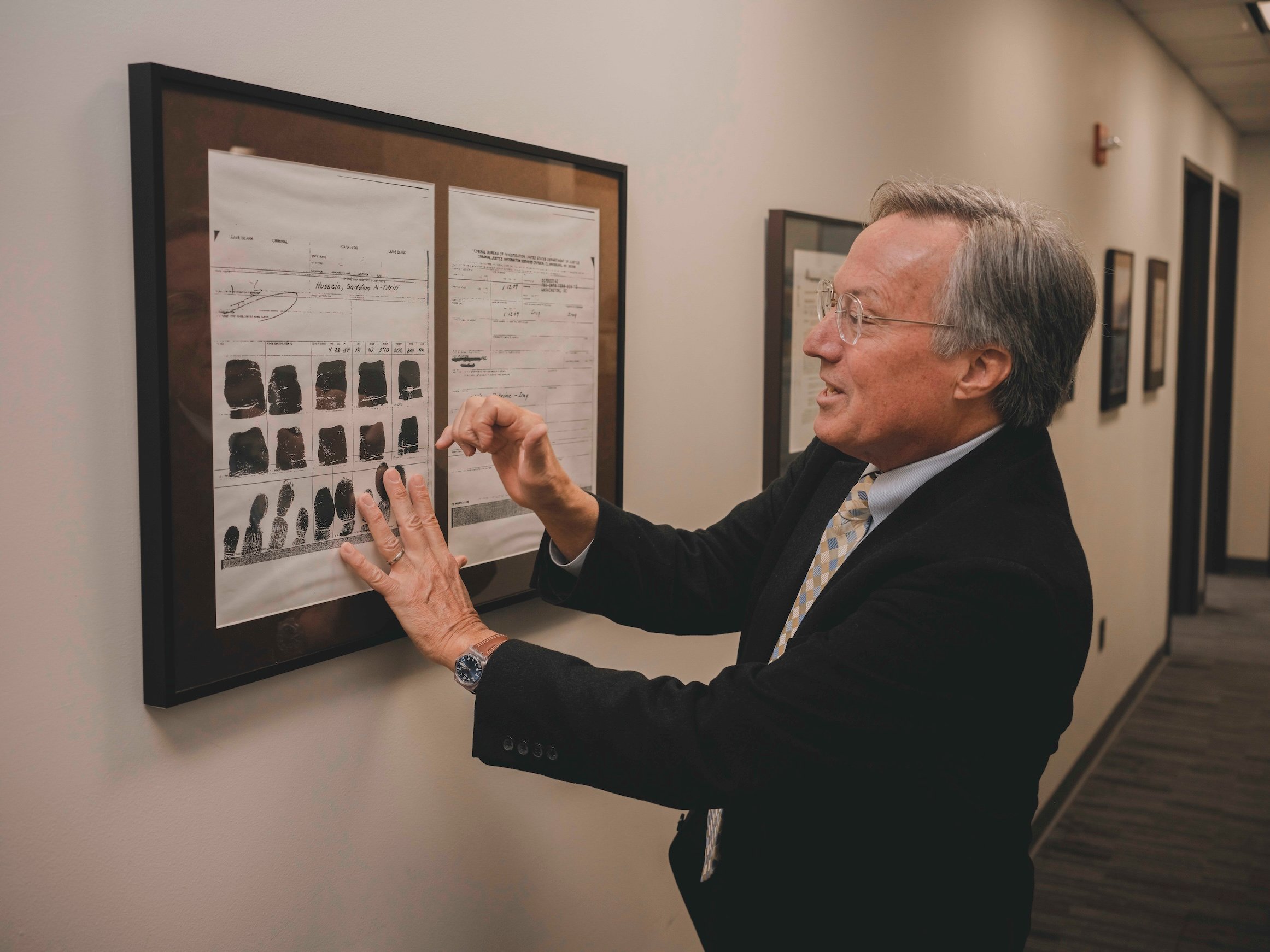
Blanton had been working in Guatemala at the time, freelancing articles and improving his Spanish. On a trip back to the US to celebrate his grandmother’s 98th birthday, he stopped in DC in part to check in at Brookings. Armstrong, who had reported extensively on Iran, pointed to some new boxes that had stacked up. “ ‘You should come work on this the next three months,’ ” Blanton recalls Armstrong saying. “I thought that could be a lot of fun.” In the boxes were materials detailing the US’s support for the Contras, a Nicaraguan anti-socialist rebel group. “I’m a kid sitting here behind the curtains with data and documents nobody else has played with,” says Blanton, who was then in his late twenties. Blanton traveled to Miami to ask ex-Contras for help interpreting the materials. While meeting in a hotel, he recalls, the onetime paramilitaries were spooked by a film crew from the television drama Miami Vice.
In the fall of 1986, word broke of the Reagan administration’s clandestine role in funding the Contras by selling weapons to Iran—a scheme designed to get around Congress’s forbidding of funding for the group. Suddenly, the nascent archive was ground zero for information related to the nation’s hottest story. “Ted Koppel is calling me up to be on Nightline,” Blanton says. Congress began investigating the so-called Iran-Contra affair, and in May of 1987, Armstrong, Blanton, and colleagues published a thick paperback titled The Chronology—a carefully curated, day-by-day account of the messy scandal. Based on careful analysis of the archive’s sprawling document collection, it became the country’s de facto guide to that summer’s series of Capitol Hill hearings. ABC News anchor Peter Jennings deemed the book “immensely useful”; after Blanton’s father saw it for sale at the checkout area of a local A&P, Blanton remembers, he “called me and said, ‘Son, I think you finally made it!’ ”
Not everyone was as enthused. Hanging on a wall at the archive’s current location in Foggy Bottom is a framed copy of a page from a reporter’s-style notebook belonging to Oliver North, a Reagan official who became a national celebrity during Iran-Contra for his role in destroying or hiding documents related to the scandal. The archive and a partner group, Public Citizen, sued the government in 1989 to get North’s records. Among the thousands of documents they received was the notebook, which has North reminding himself to place a call about a “Ford Foundation Grant to the Nat’l Security Archives [sic].”
Back then, the Ford Foundation had been one of the archive’s three major funders, donating roughly $200,000 to get it up and running. Smiling, Blanton notes that the foundation continues to sponsor the organization.
Blanton became the archive’s director in 1992, and he has expanded it enormously since then. Today, the organization has an annual budget of more than $2.5 million that comes from philanthropic donations and sales of carefully curated document collections—covering topics such as US policy in Afghanistan—through the information service ProQuest. The archive has won Emmy, Peabody, and Polk awards for its investigative work, which has also informed countless journalists and historians. “It’s truly phenomenal what he has created from what he inherited,” Bonner says.
In the early aughts, the archive expanded its role, providing documents and hard evidence to many of the “truth” commissions that sprang up around the world following the Cold War to investigate historical atrocities and human-rights abuses. “[Activists] tell us that the value of these documents for their work is that they can say, ‘This is not just me pointing a finger at a dictator,’ ” says Blanton. “ ‘This is what the State Department was telling Washington. This is what the station chief was telling the CIA.’ ”
Blanton sometimes calls government secrets “dark matter”—information that, while invisible to the public, shapes the world around us.
Samantha Power interned at the archive as a college sophomore. She later drew on its records to write her Pulitzer Prize–winning 2002 book, A Problem From Hell, which covers the American response to 20th-century genocides in Cambodia, Rwanda, and elsewhere. A former US ambassador to the United Nations and currently administrator of the US Agency for International Development, she writes in the book’s acknowledgments that many senior US officials talked to her only because, thanks to the archive, she had “documents that bore their signatures.”
Blanton sometimes calls government secrets “dark matter”—information that, while invisible to the public, shapes the world around us. Simply asking the government to reveal this information, even when backed by FOIA, is often insufficient. So over time, Blanton and his colleagues have perfected their own kind of tradecraft. Like Power, they get former officials to talk by prompting their memories with a paper trail—or by flattering their expertise and experience. “Sometimes it’s stories about how much they hate each other,” Blanton says. “Sometimes it’s stories that they believe have real application for today.”
Other tactics include filing lawsuits—such as the six years of litigation that produced the Powell emails on the skipped Iran and Iraq meeting—and studying everything from Defense Department phone books to newspaper front pages and obituaries to see who might have access to spillable secrets. Once, after spotting former national-security adviser Condoleezza Rice testifying before Congress by reading off a key 9/11 memo stamped declassified, archive staffers pressed for—and scored—a copy.
Obsessive persistence is mandatory. Nate Jones came to GW as a frustrated grad student in history, hoping to tap the archive to solve the mystery of Able Archer 83, a NATO war exercise gone awry that nearly resulted in nuclear war between the US and the Soviet Union. Blanton, recalls Jones, taught him not just to read everything written in the field but to scour every footnote, a technique that led Jones to an obscure CIA report unlocking the case. He eventually published a book detailing the near-disaster, a process that took more than a decade. In 2019, he joined the Post in the newly created position of FOIA director. “Pretty much everything I know today about FOIA I learned from [the archive] and from Tom,” Jones says.
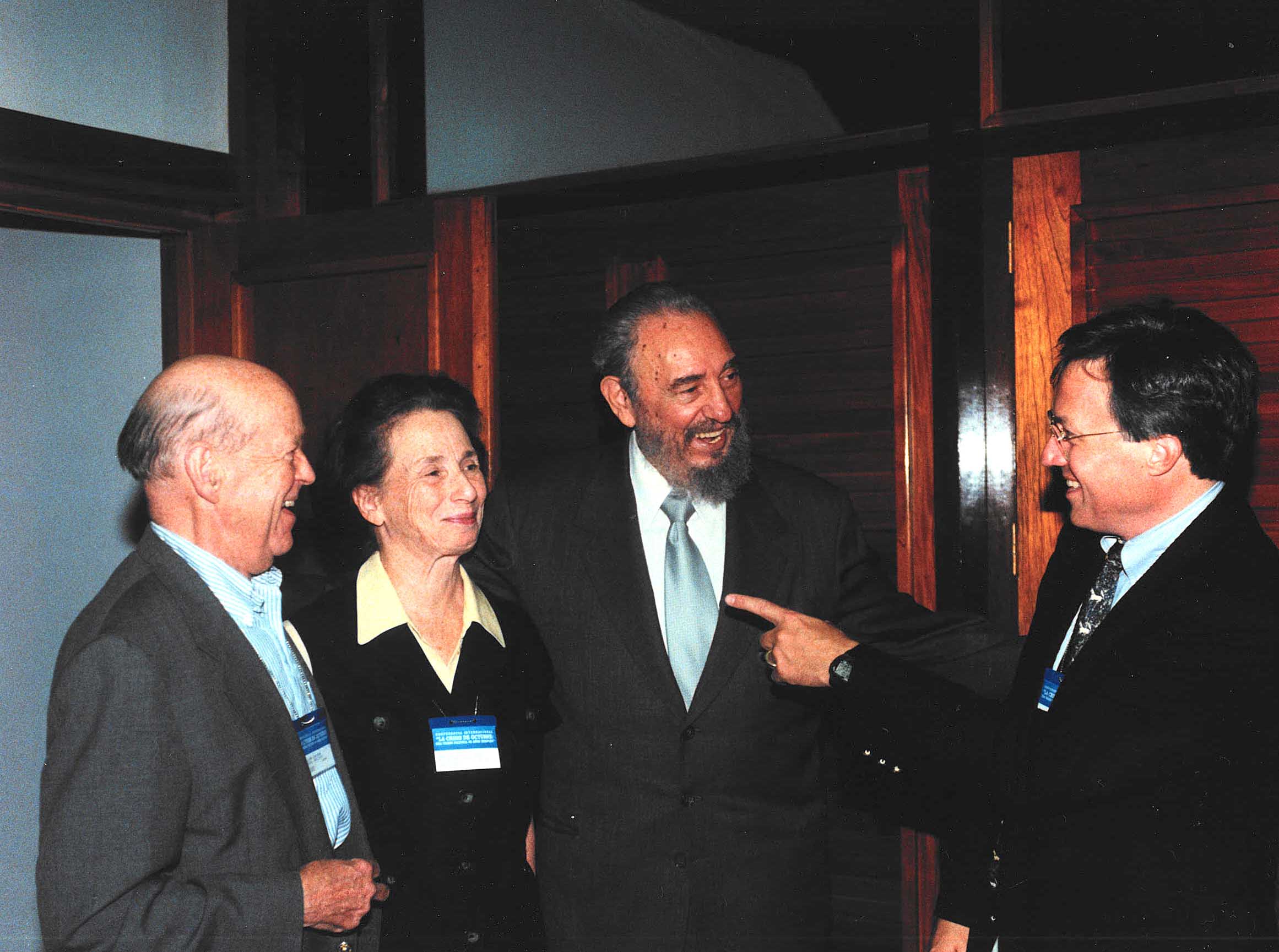
Another way of ferreting out information is a bit hit-or-miss—but when it hits, it hits big. Call it we’ll-show-you-ours. Cuba is an ongoing fixation for the archive, which is working to obtain every gettable scrap of paper detailing US relations with the country. In the early 1990s, with much still unknown about the Cuban Missile Crisis, the organization put together a conference at Havana’s Palace of Conventions in commemoration of the event’s 30th anniversary. It brought thousands of pages’ worth of once-secret US documents and asked Cuban officials to match them with its own records. Then-president Fidel Castro, Blanton says, “snapped his fingers and these three burly guys came out,” dropping multiple bankers’ boxes of instantly declassified documents on the conference table. Among them: a previously unknown 7,000-word letter to Castro from Russian leader Nikita Khrushchev sent in the months following the crisis, seeking to mollify the Cuban leader.
Peter Kornbluh, a senior analyst at the archive who is focused on Chile and Cuba, has worked with Blanton for decades. He says his boss is motivated by “the profound understanding that you can’t have accountability without access to information.” Others don’t see what Blanton does as noble—or necessarily helpful to the nation. “Much of this stuff just isn’t really needed in order to exercise intelligent, democratic oversight,” says Robert Deitz, who was general counsel at the National Security Agency from 1998 to 2006 and later a senior official at the CIA. Even seemingly inconsequential bits of dug-out information, Deitz adds, can “create a really important picture for the bad guys” once they’re pieced together—a risk people in the intelligence world refer to as “mosaic theory.”
I wouldn’t want a diagram of a binarychemical warhead and engineering measurements on it declassified, right? Bad guy is gonna do really bad.
While Blanton and his staff are bloodhounds, they don’t consider themselves a wild pack of information-freedom absolutists. “There are real secrets—that’s where I disagree with Assange,” Blanton says of WikiLeaks founder Julian Assange, who made his reputation posting heaps of still-classified documents online. “I wouldn’t want a diagram of a binary-chemical warhead and engineering measurements on it declassified, right? Bad guy is gonna do really bad.”
Blanton and others at the archive will often meet with former and current government officials to understand which secrets are being kept to protect people’s safety or the national interest—and which, perhaps, are being kept for other reasons, such as protecting reputations. Experience, Blanton says, has taught him that “maybe 20 percent are real secrets.” But when it comes to the rest, he adds, the archive’s job is to claw them back.
The archive’s work is often deadly serious. Reasoning that certain areas of inquiry were already well covered, Blanton says, “Our board gave us direction way back in the early days: Don’t do the JFK assassination, and don’t do UFOs.”
Blanton also likes to have a little fun. It sticks in his craw, for example, that the US refuses to declassify the widely known fact that the country kept nuclear warheads in Turkey in the 1960s. So in 2015, he mentioned the weapons’ existence in a Post op-ed that included this wink to readers: “Warning: If you hold security clearance, reading this column could expose you to information that potentially violates your security agreement.”
After a seven-year legal push to win the 2018 release of former Defense Secretary Donald Rumsfeld’s so-called “snowflakes”—bite-size memos on white paper with which Rumsfeld routinely blanketed his staff—the archive and partner groups threw them up online and invited the public to identify their favorites. (A contender: “The word ‘homeland’ is a strange word.”) When a FOIA’d after-action report from US Southern Command about the 1989 invasion of Panama included details on the songs played extra loudly by American troops in an effort to drive dictator Manuel Noriega out of hiding within the Vatican’s embassy in Panama City—Whitesnake’s “Judgment Day” among them—“we laughed out loud,” wrote Blanton at the time, playfully sending the report out to the archive’s mailing list as its Document of the Month with the subject line “The rock ’n’ roll assault on Noriega.”
Kate Doyle is the archive’s longtime analyst covering Latin America. The humor is strategic, she says, poking at the self-seriousness that goes hand in hand with government secrecy. But it’s also pure Blanton. “He takes so much pleasure in the work we do, in fighting for the right of people to know,” she says.
Recent years have seen a massive proliferation of classified federal documents—more than 50 million a year, according to the New York Times, a metastasis of secrecy that has led Blanton and others in government and academia to warn of “overclassification.” Some of this growth has been driven by digitization, with PDFs and emails joining old-school paper printouts to produce a whole lot more stuff that potentially needs protection. When President George H.W. Bush left office, Blanton says, his administration left 80 gigabytes’ worth of presidential records—and when President Donald Trump vacated the White House 30 years later, his administration left 250,000 gigabytes. The success of watchdogs like Blanton has contributed, too, as government officials today are more likely to reflexively classify information simply to make it harder for embarrassing tidbits to reach the public.
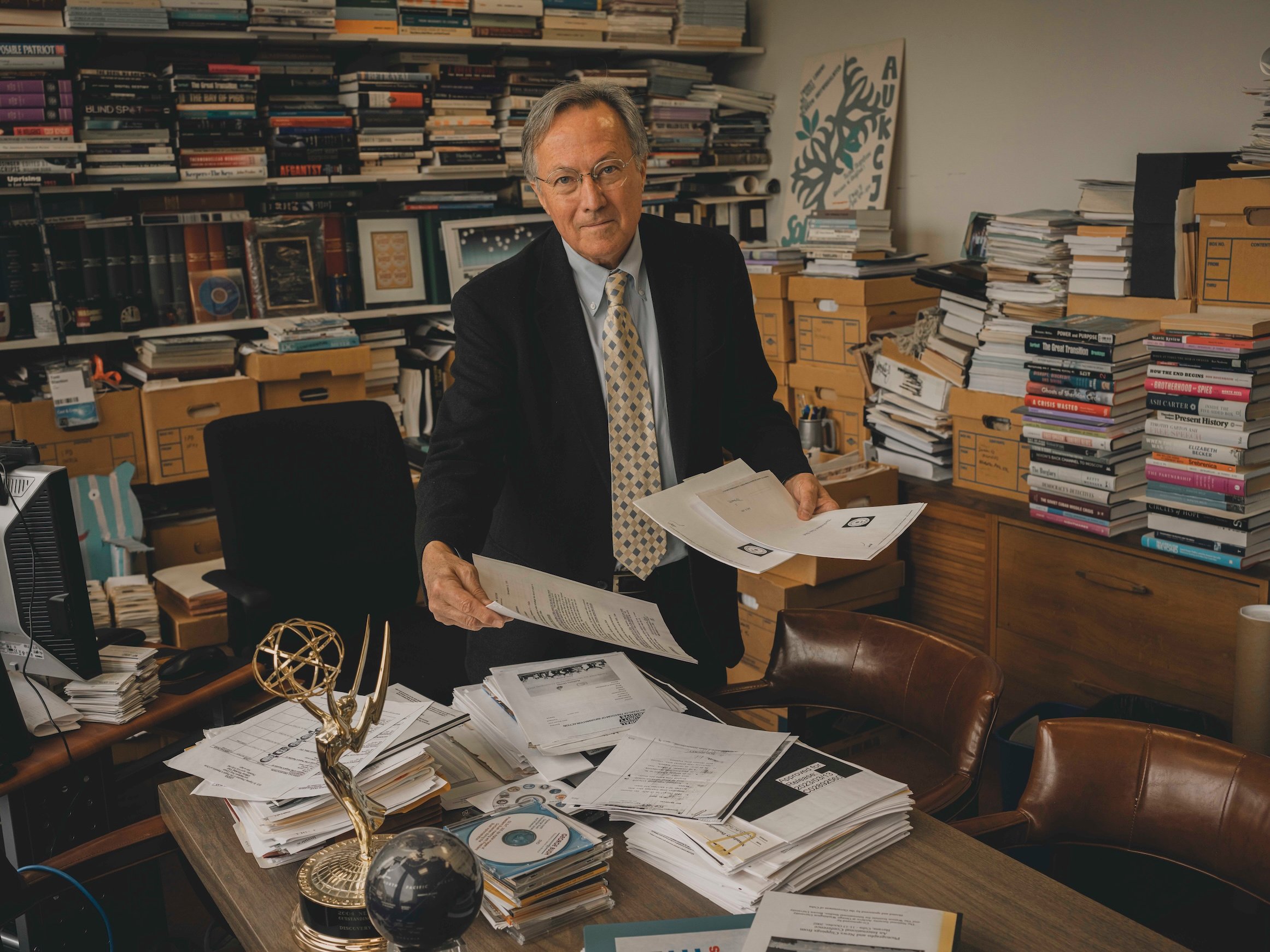
Ironically, this information explosion is a challenge for the archive. “The proverbial fire hose of information that will blow off the side of your face—how do you bring it down to a trickle that will fill your glass?” Blanton says. To make sense of this ever-growing corpus and help his human researchers summarize, curate, and find gems in all of that material, Blanton is exploring the use of artificial intelligence. “That’s the future,” he says. The archive is also eyeing new areas of interest, such as the climate diplomacy around the US entrance into the Paris Accords under President Barack Obama and subsequent withdrawal under Trump. “What were the arguments there?” Blanton asks.
Some things, however, won’t change. Since the summer of 2022, the archive has secured the release of documents connected to the 1945 Trinity test in New Mexico, the world’s first nuclear-weapon detonation, showing that the Army general in charge of the Manhattan Project misled Congress and the public about the harmful effects of radiation and that fallout from the explosion reached almost 90 miles northeast of the blast site. For Blanton, these kinds of secrets aren’t simply a piece of nearly 80-year-old history—they’re why his organization exists and why it has to “keep pushing.”
“The government hid these documents from us,” Blanton says. “Any notion of democratic accountability has to start there. If a government can get away with systemic secrecy, then it’s also able to get away with systemic deception. There is, I would say, a citizens’ duty to press—if we’re gonna keep our democracy.”
It Came From The Archive
Since its 1985 founding, the National Security Archive has obtained billions of government documents and emails. Here are three of the strangest discoveries.
Agent Elvis
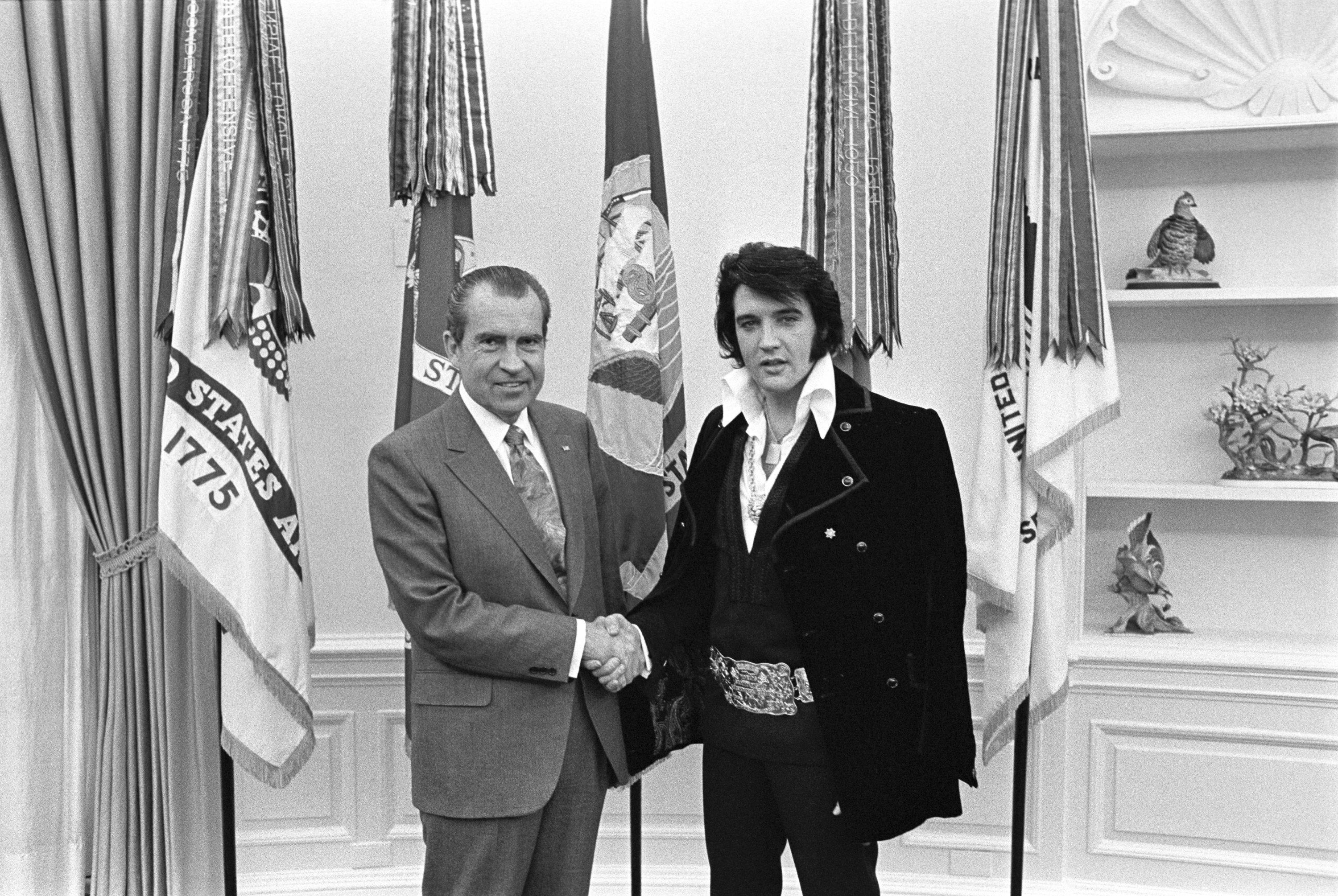
One day in the 1990s, archive analyst Kate Doyle was looking for drug-policy-related materials in Richard Nixon’s presidential papers when staff at Nixon’s presidential library told her about their most requested record: a photo of, in Doyle’s words, a “dissolute” Elvis Presley shaking hands with a grinning Nixon in the White House. Figuring there must be a backstory, Doyle went digging, and turned up everything from outtakes of the photo session to the paper trail that had arranged the meeting. Doyle recalls archive executive director Tom Blanton’s reaction: “These are jewels. We have to put them somewhere.” Blanton posted the materials online. “It put our website on the map as a place where you go to see very unique primary sources,” he says with a laugh.
Area 51 Is Real(Ish)

Though the archive’s board has steered the organization away from pursuing any UFO secrets held by the government–reasoning that others have done ample work in that area–its aggressive and frequent Freedom of Information Act requests have made it an accidental player in the area. In 2013, archive senior fellow Jeffrey Richelson submitted a request for records connected to the CIA’s 1950s work on U-2 spy planes. The documents that came back revealed for the first time, in detail, the existence of Area 51–a facility in the Nevada desert that some in the UFO community believe is where the military stores crashed vehicles from other planets.
REDACTED: Pinochet’s Favorite Drinks

After a 2004 release of George W. Bush administration records, the archive pointed out that government reviewers at the Defense Intelligence Agency found it necessary to retroactively scrub a decades-old and once-public official biographical sketch of then-departed Chilean dictator Augusto Pinochet of such consequential details as being “charming, attractive, socially at ease,” close to his family, and a fan of both fencing and cocktails. “What I love is that they cut out things like that he likes Scotch and pisco sours,” Blanton says.
This article appears in the May 2024 issue of Washingtonian.
